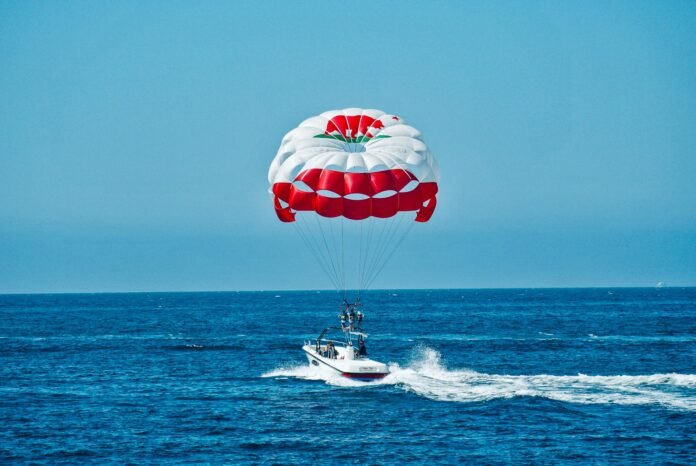Parasailing is a thrilling water sport that offers participants breathtaking aerial views while being towed by a boat. To ensure a safe and enjoyable experience, it’s essential to consider the optimal conditions for parasailing. Here’s a detailed guide on the best weather and environmental conditions for parasailing.
1. Weather Considerations
Table of Contents
Weather conditions play a critical role in the safety and feasibility of parasailing:
- Wind Speed: Moderate and consistent wind speeds between 5 to 15 knots (approximately 5.75 to 17.26 mph or 9.26 to 27.78 km/h) are ideal for parasailing. Light winds may make it challenging to achieve lift, while strong winds can create unsafe conditions.
- Wind Direction: Winds should ideally be blowing parallel to the shoreline or the direction of the boat’s travel. Crosswinds or gusty winds can affect stability and control during takeoff, flight, and landing.
- Visibility: Clear visibility is crucial for safety and enjoyment. Ensure there are no foggy or misty conditions that could impair visibility for both participants and the boat crew.
2. Sea Conditions
The condition of the water also impacts the parasailing experience:
- Wave Height: Calm waters with minimal wave activity are preferred. High waves can make it difficult to launch and land safely from the boat.
- Water Depth: Parasailing operations typically take place in waters with sufficient depth to ensure safety during takeoff, flight, and potential water landings.
3. Time of Day
Choosing the right time of day can enhance the parasailing experience:
- Morning or Late Afternoon: These times often offer calmer winds and less boat traffic on the water, providing optimal conditions for parasailing.
- Avoid Midday: Winds tend to be more variable and stronger during midday hours due to thermal effects and changing atmospheric conditions.
4. Safety Precautions
Operators prioritize safety by adhering to strict guidelines and protocols:
- Equipment Checks: Ensure all parasailing equipment, including the parasail, harnesses, towline, and boat, undergo regular inspections and maintenance.
- Participant Briefings: Before the flight, participants receive comprehensive safety briefings that cover procedures, hand signals, and what to do in case of emergency.
- Experienced Crew: Qualified and experienced boat captains and crew members oversee operations, monitor weather conditions, and make informed decisions regarding safety.
5. Participant Readiness
Participants can contribute to a safe and enjoyable parasailing experience by:
- Following Instructions: Listen carefully to instructions from the crew regarding takeoff, flight posture, and landing procedures.
- Physical Readiness: Ensure you are physically capable of participating in parasailing activities. Inform the crew of any health conditions or concerns that may affect your ability to participate safely.
Choosing the best conditions for parasailing ensures a memorable and safe adventure for participants of all ages. By considering factors such as wind speed, direction, sea conditions, time of day, and adhering to safety protocols, operators can provide an exhilarating experience while prioritizing the safety and well-being of participants. Whether you’re a first-time parasailer or an experienced enthusiast, optimal conditions contribute to an enjoyable flight and breathtaking views from high above the water. Always choose reputable operators and be prepared to adapt plans based on weather conditions to maximize safety and enjoyment during your parasailing adventure.


